Matador Network's Blog, page 1026
August 27, 2019
How Burning Man is different in 2019

Burning Man is happening through September 3 in the Nevada desert. As always, it’s dusty, weird, and uncomfortable. It’s also joyous, embracing, and transformative. You don’t really get the latter without the former. Burning Man is about participating, giving back, and rejecting (even if only for a few days) the commercialization that permeates modern society.
Those lofty goals are hard to maintain.
In February of 2019, Burning Man CEO Marion Goodell expressed her concern about an erosion of Burning Man’s core values — among them inclusion, self-reliance, gifting, and communal effort — calling instead for a “Cultural Course Correction.”
All-inclusive camps miss the point.
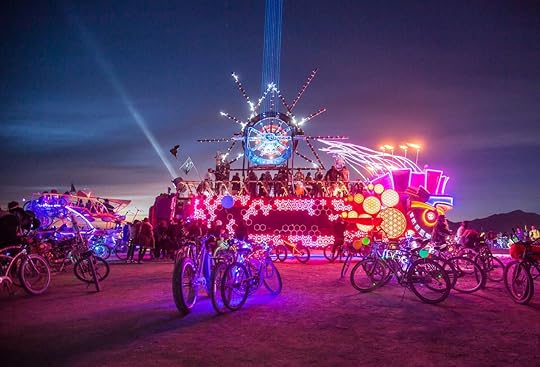
Photo: Scott Sporleder
“One of the most distressing trends is the increase of participants who don’t seem invested in co-creating Black Rock City, and are attending as consumers,” wrote Goodell. She added, “In some cases, camps or companies are offering ‘all inclusive’ pre-packaged Burning Man experiences, claiming they will preemptively meet all of their client’s needs…”
As Goodell notes, that is not what Burning Man is about. Burning Man is about being generous. It’s about experiencing art, music, beauty, weirdness, and everything else because someone made the effort to bring it there and share it with others. You, in turn, do your part to give back to Burning Man.
While obvious ways are creating art projects or hosting an open bar at your camp, you could also just lead sunrise yoga sessions, hand out cold beers on a hot afternoon, or simply help out in your own camp and approach your fellow Burners with an open mind and an open heart.
The cultural weight of Burning Man

Photo: Scott Sporleder
It turns out that formula is a pretty darn appealing one. “The Burning Man culture is a beautiful thing,” says Sun Valley-based photographer and 14-year Burning Man veteran Karl Weatherly. “There’s nothing else like it anywhere in the world.”
Many people would agree with him, which is why Burning Man has attracted so much international attention.
“The cultural weight of Burning Man around the globe is so important; so many people want to be there,” says Vicenç Marti, president of Barcelona-based elrow, one of the world’s largest electronic music event companies. As Marti explains, when you have so much demand exceeding supply… it’s going to bring prices up.”
Moreover, when something becomes such a hot commodity, people want to be there, regardless of whether or not they’ve ever understood its essence. Combine hard-to-get tickets with an appetite from people who have no interest in feel-good core values, and you’ve got a market for the all-inclusive, turnkey camps Goodell refers to.
Swanky spots costing tens of thousands

Photo: Noelle Alejandra Salmi
You can find those camps on the outer rim of Black Rock City, as the temporary metropolis is called, often near the partying side of BRC’s clock-inspired street grid near 9:00 and 10:00 streets. You’ll see dozens of walled-off tents that look alike, possibly with a security guard keeping people out. The folks inside, for their part, have paid tens of thousands of dollars apiece to attend Burning Man as comfortably and easily as possible.
The way photographer Weatherly sees it, many of the rich guys inside those camps “just want to have a good time for five days. They want to get f***cked up and get laid… That’s the polar opposite of what Burning Man should be.”
Or as Goodall points out in her missive, “Part of what makes Burning Man unique and powerful is that everyone has to work hard to be there… personal effort is integral to the social agreement we make with our fellow community members when we decide to participate in Burning Man. Burning Man is not built for you; it is built by you.”
Addressing the rich people issue

Photo: Noelle Alejandra Salmi
The Burning Man organization does reserve tickets for long-time attendees and camps that have historically contributed significantly to the BRC experience. Over the years, it has tried — with questionable success — a variety of other methods to ensure that tickets are made available to people for less than the $1,500 they’ve been selling for on Craigslist this week.
Equally critical is to get the message out that Burning Man is neither a party nor a festival. Among the Cultural Course Correction efforts planned, Goodell promised greater outreach to ticket holders about the importance of attending Burning Man as active, contributing participants rather than as spectators.
A brief, informal survey of 2019 ticket holders suggests that outreach efforts hadn’t been all that obvious. Admittedly, though, the ones with whom I spoke were long-time attendees who already grasp the Burner philosophy. It’s possible the messaging was not new to them, and so more easily missed.
An addition to Burning Man’s already difficult ticketing process is the requirement that you complete a brief questionnaire before you can go to the next step. It’s unclear, though, how much that deters the folks who want to go just to party.
“If you’re a Plug and Play, you don’t give a shit. You’ll answer the right stuff,” opines Weatherly. But Weatherly appreciates that the organization is trying its best with a tough situation. “At least they make you go through the motions.”
The A-Lister DJ circuit

Photo: Noelle Alejandra Salmi
There’s another interesting phenomenon taking place that Marti, the elrow president, says he’s seen emerge recently. Within the electronic music scene, says Marti, Black Rock City is one of the four places on the planet — alongside Ibiza, Mykonos, and Tulum in Mexico — that an aspiring DJ should hit up in a calendar year.
“In the last five years, there’s 20 or 30 [EDM] artists who’ve made a career playing at Burning Man,” says Marti. “This is a subculture that people associate with elite and A-listers.”
This, in turn, creates a feedback loop, says Marti. Add in social media and the explicit targeting of A-lister society, and this subculture at Burning Man has driven everything up, from participation in turnkey camps to ticket prices.
Moreover, the festival industry is trying to imitate and market to the new Burning Man audience. But that just creates more interest in the original. And as Burning Man and former Burners hold BRC-inspired events everywhere from Los Angeles and British Columbia to Spain and South Africa, interest in the original Burning Man simply increases. And with more demand comes the never-ending challenge of supply.
Small steps and the bigger picture

Photo: Noelle Alejandra Salmi
Together with Goodell’s February message, the Burning Man organization did kick out one turnkey camp, called Humano The Tribe — which charged $100,000 per person and left a whole lot of litter behind — and warned 12 other camps to improve their behavior.
But drive to the outer rim this year, and you’ll still see the rows of intimidating, posh tents all turned inward. There may also be art cars that are too cool (or maybe just too crowded) to let you on. It’s a push and pull. As Burning Man stays true to its core values, it’s going to remain a cool place to be, and people who haven’t earned their place there will want to keep coming.
But the reality is that Burning Man is many things. “There are several Burning Mans happening at the same time,” says Marti. “There’s a lot of people who don’t care about the super premium camps and the semi-private parties and the Ibiza-like schedule of DJs.”
Weatherly agrees. He personally wishes Burning Man would do a lot more to address the turnkey camps, saying he’s “shocked and dismayed” that it hasn’t. Yet he adds that, “If you have snooty neighbors, you don’t have to let that harsh your buzz.”
Weatherly still gets his “biggest dose of positivity and creativity” from Burning Man every year. “The hardcore Burning Man culture will never go away.”
Marti, for his part, says the combination of the challenging environment and effort, together with the radical self-expression and self-reliance (two Burning Man core values) are an important part of his year. “I always say that if the other 51 weeks of the year I behave only 10 percent more like I behave at Burning man, I am a better person.”
Maybe those turnkey campers can take that 10 percent home with them, too. We might all be better off. 

More like this: Ultimate guide for Burning Man virgins
The post Burning Man is underway. Has it solved the rich people problem? appeared first on Matador Network.

Brazil turns down aid for fires

More than $20 million in aid was pledged to help Brazil combat the fires raging in the Amazon during this week’s G7 summit in France, but Brazil has refused to accept the offer.
According to The Guardian, Brazilian President Jair Bolsonaro took the aid money as an unwanted attempt at foreign control orchestrated by French President Emmanuel Macron. “Brazil is a democratic, free nation that never had colonialist and imperialist practices, as perhaps is the objective of the Frenchman Macron,” said Onyx Lorenzoni, the chief of staff to Bolsonaro.
“Macron cannot even avoid a predictable fire in a church that is part of the world’s heritage, and he wants to give us lessons for our country?” Lorenzoni further commented, referring to a fire that occurred last April at the Notre Dame Cathedral in Paris. “We appreciate [the offer], but maybe those resources are more relevant to reforest Europe.”
According to The Guardian, the money was meant for nations ravaged by fires to acquire more firefighting planes.
“We respect your sovereignty. It’s your country,” Macron responded. “But the trees in the Amazon are ‘the lungs of the planet.’”

More like this: Brazilian president falsely claims Amazon fires were started by environmental groups to make him look bad
The post Brazil refuses to accept $20 million in aid to fight Amazon fires appeared first on Matador Network.

Science could save America’s GBF

The fate of the Florida Reef Tract has seemed dire lately, but a scientific breakthrough at the Florida Aquarium might be able to turn things around. The aquarium in Tampa has just facilitated the spawning of a group of endangered Atlantic pillar coral for two days in a row, which is the first time this has ever happened in a lab setting.
While on a small scale this may seem insignificant, it could actually go a long way toward saving North America’s only barrier reef from extinction by repopulating the reef with juvenile corals raised in a lab.
A press release by the aquarium explained that the facility uses coral greenhouses that mimic the natural environment of corals using technology to artificially reproduce the time of sunrises, sunsets, moonrises, and moonsets to trigger the corals to spawn in the same way they would in the wild.

Photo: Florida Aquarium
The event is an incredible achievement that gives hope to the coral reefs in Florida and the Caribbean. 

More like this: 7 artificial reefs every scuba diver needs to see
The post Scientific breakthrough could save America’s Great Barrier Reef appeared first on Matador Network.

Difference between arepas

The basic arepa is a pancake-shaped ground corn bread that’s grilled, fried, or baked and stuffed with a variety of ingredients. It can be sweet or savory, simple or complex. However it’s prepared, it’s a beloved food in South America — particularly in Colombia and Venezuela.
Arepas might be mistaken for a simple sandwich or a taco with a rounder shape, yet it is an altogether different beast with a rich history that begins in the Andes. The Timoto-Cuica people, a pre-Colombian civilization inhabiting the mountain range around what is now Venezuela, were probably the first to eat arepas. Though much of the now-extinct Timoto-Cuica culture remains mysterious, what is known is that they were expert farmers. They developed irrigation techniques and farmed on descending hillside steps (called terracing), which allowed multiple crops, including corn and cassava, to thrive.
The Timoto-Cuica people dried and ground corn to make an unleavened corn cake, the first version of the arepa. Originally, the indigenous people of South America chewed the corn into a paste and formed the arepa from the resulting dough well before mortar and pestle tools were developed. The cakes were then cooked on a pan called the aripo, which might be the source of the name arepa.
The concept of an unleavened bread wasn’t confined to the Andes. The Arawak people, who lived closer to the Caribbean, had their own precursor to the arepa, called casabe, which used cassava instead of corn. The true arepa, however, is made with strictly corn.
Once the Spanish conquistadors arrived in South America in the 15th century, the slow decline of these vibrant and flourishing societies began. Yet the arepa endured, in part because the Spanish took a liking to the snack, and quickly spread to the northern regions of South America.
That’s not the end of the story, though. The current ubiquity of the arepa is entrenched in the politics of 19th-century South America, when the continent demanded independence from the Spanish. In short, in the continent’s northern region, Simón Bolívar fought a revolution, ousted the Spanish, and established Gran Colombia, a region that would later split into several different countries, including Colombia, Ecuador, Venezuela, and, eventually, Panama.
When Colombia and Venezuela became autonomous countries in 1831, Colombia took the arepa with it. Colombians adapted the recipe, and the Colombian arepa became a dish all its own, separate from the original Venezuelan incarnation. A heated, though friendly, rivalry now exists between the two countries over who makes the better version.
Venezuelan arepas

Photo: nehophoto/Shutterstock
The Venezuelan arepa is a cake made from corn flour that can be grilled, fried, or baked. It has a texture similar to flat bread, and is typically thicker than the Colombian version. It’s a simple but beloved snack when eaten plain, and accompanies heartier meat dishes and stews when spread with butter or cheese.
In the 1950s, with the advent of a commercialized type of cornmeal called masarepa (manufactured by large companies like Goya), home cooks could simply add water to the mixture and voila! A super simple arepa dough became accessible to everyone. The popularity of the arepa exploded as a result, and that’s when it went from a humble corn cake to a widely varied, standalone dish, taking on the sensibilities of a sandwich with all types of fillings.
When the arepa is split open and stuffed with fillings like meat or cheese, it’s called an arepa rellena. Common fillings include black beans, cheese, plantains, shredded beef or chicken, and pork skin. The reina pepiada arepa, filled with mashed avocado, mayonnaise, and shredded chicken, is another favorite.
Colombian arepas

Photo: goldnetz/Shutterstock
In Colombia, arepas are most commonly eaten with breakfast as a side dish, but of course can be eaten as an accompaniment to meals throughout the day. The ingredients tend to be a bit more sparse than in Venezuela. The corn cake is thinner and often sweeter. In most cases, the only filling is melted cheese. Colombian arepas are made without the addition of salt and oil, so the texture tends toward the dry side.
If more elaborate toppings, like shredded beef or queso campesino, are added to the Colombian arepa, it’s treated more like an open-faced sandwich (similar to a tostada) with the ingredients piled on top of the corn cake.
There are many varieties of Colombian arepas. The arepa de choclo has a little sugar in the dough, and is traditionally served alongside a cup of hot chocolate and topped with queso fresco; this version is also made with fresh corn, so it has a more vibrant yellow hue. An arepa de huevo is fried, then split open, an egg is cracked inside, and then the dough is fried again. And the arepa boyacense, which originated in the Boyacá region of Colombia, is stuffed with a type of milk curd called cuajada.
While the Venezuelan arepa might be most popular globally, there is no doubt that both versions have become staples of South American cuisine, beloved for their versatility and indicative of the region’s ancient and complex history. 

More like this: 23 Colombian foods the whole world should know and love
The post Colombia and Venezuela both claim the arepa. Here’s the difference between the two. appeared first on Matador Network.

August 26, 2019
Greek island fire forces evacuations
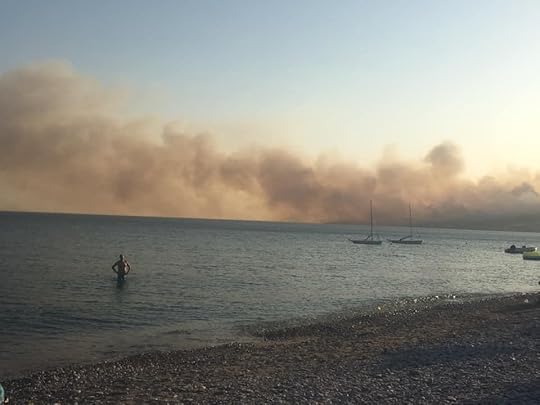
On the heels of the devastating fires in the Amazon, dozens of wildfires broke out in Greece this weekend, forcing evacuations from beaches and hotels as roughly 700 firefighters were deployed across the Mediterranean nation.
The fiercest blazes tore through the island of Samos, located just under a mile off the coast of Turkey, where coastguard ships shuttled approximately 1,000 beachgoers from the island’s east coast to an indoor stadium in the nearby town of Pythagoreio. Thankfully, the fire has largely been contained, according to the fire department.
Fire danger is high in Greece during summer, increasingly so as temperatures rise due to climate change. A combination of hot, dry conditions and gale-force winds was responsible for the recent wildfire outbreak, which also affected the Peloponnese, Corfu, and parts of the mainland.
Beyond environmental factors, human negligence like disposing of lit cigarettes and barbecuing irresponsibly has been a contributing factor in Greece’s recent wildfires, reminding everyone just how important fire safety is in the heat of summer. 

More like this: The Amazon rainforest, our defense against climate change, has been on fire for weeks
The post 1,000 people evacuated from beaches due to Greek island wildfire appeared first on Matador Network.

Best things to do in Northern BC

The Skeena River slices through northern British Columbia, serving as an important lifeline for the communities along its banks from the headwaters in the Spatsizi Plateau until it spills into the Pacific Ocean 350 miles downstream. The Skeena’s deep turquoise water contrasts with the bright riverside flora and the dark, earthy hues of the Babine Range peaks beyond.
You might not run into too many people in these parts, but seemingly everyone you do meet isn’t shy to tell you their story around the dinner table. Or the pool table, campfire, or anywhere else you happen to cross paths. The stories are often of the Skeena, the Kispiox, or the Nass rivers, and of the four annual salmon runs that flood these waterways with the area’s primary source of protein. There are stories of survival in this rugged landscape and of the people who have excelled at doing so.
For those seeking an escape from urban life, Northern BC is the ideal destination. Ask a resident in Smithers where the nearest Target or Apple store is and you’re going to get a blank stare, maybe a finger pointing south. The region is not for people who aren’t keen to spend time outdoors, and no one around here seems eager to change that. But if you’re up for real adventure in BC, head to The North. Here’s how to make the most of it.
Get out on the water and visit the Kitseguecla Nation.

Photo: Tim Wenger
The best way to see the natural diversity of Northern and Central BC is to hop on a jet boat on the Skeena. If you’re unfamiliar with these small, minimalist vessels, Rob Bryce of Northern BC Jet Boat Tours treaty is happy to fill you in.
“It’s basically a big vacuum cleaner,” he explains. “It sucks up water in the front and spits it out the back. They’re designed for rivers, for the rapids we run through.” With that, Fred Seiler ripped the motor. The boat stood on its rear and shot forward through the whitewater, skidding by the rocky bank downriver tow. Tours can run anywhere from an hour to a full day, covering well-known — at least locally — rapids including the Whirligig, Beaver Dam, and Devil’s Elbow. If you’re lucky, your tour will pass by the Kitseguecla Nation land.
As the boats wind south, the smell of smoked salmon becomes increasingly stronger. Many Kitseguecla Nations families smoke their own salmon. Some families smoke for trade or sale, but all smoke for self-nourishment.

Photo: Tim Wenger
All visitors to Kitseguecla Land — there aren’t many — are brought ashore to the Nation’s traditional song of welcome. Just off the riverbank, their village is an expansive settlement whose story is told by the many totem poles throughout town; many of these poles are in the yards of residents, others in open areas.
Also in the village are the small smokehouses, which many families have in their yards — essentially wooden shacks complete with hooks and a gutting table. After being gutted and fileted, the fish are hung for two to three days in these structures, with the fire going continuously. Some in the younger generation have taken to adding spices or candying the salmon, but others keep it straightforward. Just fish, smoke, and time. The guts go back in the river.
“It’s unacceptable to dump the guts anywhere else,” said Clyde Williams, Hereditary Chief of the Kitseguecla’s Owl Clan and the master songster who welcomed us ashore. “The belief is that this keeps the fish coming back.” Williams, quite possibly Northern BC’s most prolific storyteller, tells us about his preferred method for smoking and vacuum sealing Dungeness Crab. He says that when you sauté it months later, it tastes fresher than anything the grocery store might pass off as a recent catch.
It’s not just salmon that run these waters, and Williams provided a full tour of his smokehouse operation in session. The smokehouses, as with the Nation’s other fishing and harvesting practices, are part of the Kitseguecla’s sustainable way of life.
“If the lights went off all over the world, there would be chaos in Vancouver. Chaos in Calgary. But here, we wouldn’t even notice the difference,” Williams said. “The key to protecting our culture is teaching people to be connected to the land. With that comes an understanding of how important the traditions are.”
Although there aren’t yet a lot of visitors, and those who do come shouldn’t show up unannounced, the Nation is embracing local tour guiding. It believes that by inviting more people to experience their traditions firsthand, interest in preserving them will continue.
Spend a few days in the Nass River Valley.
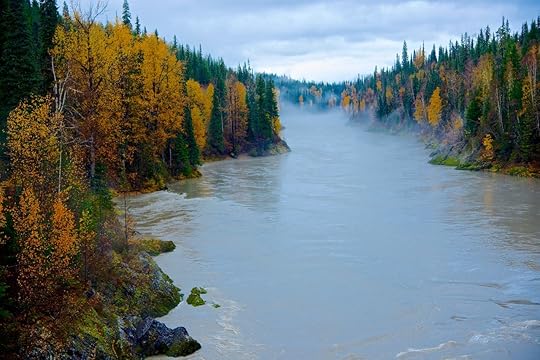
Photo: Danita Delmont/Shutterstock
Even more captivating than the landscape of The North, as the region surrounding Smithers and north of BC Highway 16 is referred to by nearly everyone in or around it, are the stories you’ll hear told here. Although five million people live in British Columbia, only 250,000 of them reside in the top two-thirds of the province.
Absorbing the feel of The North is a tall task, one that is impossible to understand without visiting First Nations territory. Here, you’re guaranteed to learn something that questions your understanding of our own country’s history, as well as something that inspires hope for the future.
On May 11, 2000, the Nisga’a Final Agreement between the Nisga’a Nation and the Canadian government handed over 745 square miles of land back to the nation’s governing body after more than a century of negotiation, ceding control of not only their land but their traditions and way of life. Nothing is perfect, but a solid path forward has been drawn by the efforts of the Nations in conversation with the government in Ottawa.
Even the least discerning eye wouldn’t need to squint to take in the beauty of their land, and for the first time since the 1800s, federal oversight is almost naught, to the point that it has its own school system and its own medical system, complete with doctors and nurses living and working in the areas they serve. The governing bodies also have the ability to tax revenue from private mining operations on their land which has, along with trust money set aside following the treaty, put the Nisga’a in a positive financial position to invest in outdoor recreation and tourism.

Photo: Feng Yu/Shutterstock
The Nass River Valley where the Nisga’a live is ripe with opportunities for outdoor recreation. The local economy is working to harness this as a sustainable means of long-term revenue and employment, and your tourism dollars in the area go a long way to making that happen.
“We have a program called the Nisga’a Business Development Fund that helps young entrepreneurs,” said Bertram Mercer, the Nisga’a Lisims Government’s Economic Development Manager. “We’re in pilot mode right now to determine what kind of businesses can be run here. Fishing boats are viable, and we know there are others.”
Native-owned businesses in the incubator receive not only funding assistance but also mentorship and connections, and the results of the new fund are already evident. Young people are sticking around instead of moving down to the big cities near the US-Canada border, and more of those who moved away to find work elsewhere are coming back to start businesses in their hometown.
Many of these businesses are built around the land that provides their sustenance, such as Reel North Adventures, which leads visitors on guided salmon, trout, and steelhead expeditions on the surrounding rivers. Rather than ditching long-standing tradition, First Nations customs are prioritized from a young age, with special attention given to traditional language and cultural ceremonies. “We teach the language and culture right from preschool,” said Mercer. “They learn the language right away.”
To familiarize yourself with the area, take a day and drive the Nisga’a Nation Auto Tour along Highway 113. Stop along the way to hike the mile in from Crater Creek at the Nisga’a Memorial Lava Bed Provincial Park, the first park jointly managed by both a First Nations and BC Parks. You’ll hike across volcanic lava that still covers a stretch of the mountainous landscape with black, pumice-like rock called “Aa,” even though the last volcanic eruption was 2,000 years ago. After the hike, stop by Nass Valley Hot Springs for a soak. Then, to learn more about the treaty and the impact is has had on the Nisga’a Nation, visit the Nisga’a Museum.
Explore other outdoor activities.

Photo: Tim Wenger
Driving from Vancouver to Smithers takes about 12 hours of road time, and spending a night in Prince George is a good way to break up the drive. Most convenient, though, is flying in. Local airports in Smithers and Terrace offer connections from Vancouver, Kelowna, and other regional hubs.
You can base some of your time in either Smithers or Terrace, exploring the region’s trails by foot and by mountain bike. Adventure Camp Tourism in Smithers runs mountain bike shuttles and leads guided rides and hikes. The city’s tourism website offers an extensive list of nearby trails and routing information if you want to brave it on your own. Be forewarned, though: You’ve likely heard the term “bear country” before, and Northern BC epitomizes the phrase. It’s not uncommon to see black and even grizzly bears crossing the road, and while seeing them on the trail is rare, precautions — like carrying bear spray — should be taken.
In winter, Hudson Bay Mountain is the local ski hill. Backcountry users can explore the Hankin-Evelyn trail system, one of the few backcountry ski areas where runs are actually cut into the mountains, though you still have to earn your turns before you can take them. Helicopter and cat-skiing options abound, with services from Skeena Heliskiing.
Get off the grid.

Photo: Anna Dunlop/Shutterstock
You’ve made it this far north; you might as well go all in and get off the grid for a few days. The Nisga’a Nation is inspiring other sustainable tourism models in the area. Tourism businesses throughout the region are working to follow the lead of First Nations communities, crafting off-grid experiences within the region’s mountains and waters to highlight the importance of protecting them.
Bearclaw Lodge is a prime example. Located along the Kispiox River two hours north of Smithers, the off-grid lodge falls somewhere between rustic cabin and luxury retreat, powered by rooftop solar panels and operating in a manner that necessitates all-inclusive service. In summer, those solar panels can work long hours — since the sun set at 9:42 pm on July 25 — but the opposite is true in winter.
Bearclaw embodies everything the region offers. The in-house kitchen serves fish and game from the surrounding land and produce from the on-site garden. The lodge is a destination for backcountry skiing and snowboarding in winter and salmon fishing in autumn. Summer activities include kayaking the Kispiox, with occasional stops to snorkel for salmon or cast a line into the cool water.
“The land where the lodge now sits was originally owned by a German couple who refused to sell unless the horses stayed on the property,” said Kaleigh Allen, manager of the lodge and daughter of founders Gene and Jane Allen. “So the horses stayed.”
As such, horseback riding and hiking are on offer, as well, with helicopter access to high-altitude trailheads when weather permits. And, no, the weather doesn’t always permit. Everyone who has traveled in Canada is familiar with the term “weathered out.” Accessing the backcountry is often a waiting game. When clouds move in, you stay in, and if this happens, your best option is to cozy up in the lodge, soak in the hot tub, and converse with the Allen family in front of the fireplace.
Ask about the German Eye Sucker, a local legend who, through an unparalleled ability to suck the toxins of a hornet sting straight from the human body, saved the right eye of Bearclaw co-owner Jane Allen after an unfortunate hornet swarming incident. The Bearclaw Lodge, like The North as a whole, is the place you go to forget about lift lines and crowded trailhead parking lots because they’re not even a thing around here. You’re more likely to encounter a swarm of salmon or hornets than you are a group of people.
Back in civilization, pull up a stool at Smithers Brewing and join the conversation about fishing conditions or trail developments in the Hankin-Evelyn backcountry, miles of trail and river all to yourself, the luxury spas and high-end art galleries of Aspen nowhere to be found. Residents here are just fine with that. Bring open ears, an open mind, and your outdoor gear. Once you converge with the landscape of The North, it’s easy to forget that life south of Smithers even exists. 

More like this: This underrated Canadian wine region is the next Napa Valley
The post For real adventure in British Columbia, head to The North appeared first on Matador Network.

Bomb discovered at Barcelona beach
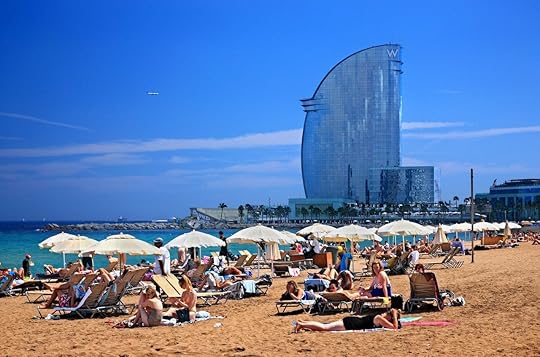
A normally crowded beach in the heart of Barcelona, Spain, was partially evacuated Sunday and closed all of Monday after a police officer discovered a loaded bomb about 80 feet from the Sant Sebastià Beach shoreline.
Experts believe the bomb, which contained about 154 lbs of TNT, was a remnant of the Spanish Civil War that took place from 1936 to 1939. The Spanish Navy, along with the experts, moved the bomb further out to sea and detonated it far from civilization, preventing any harm from reaching the city.
While no one was injured, its discovery disrupted a busy weekend on one of the city’s most popular sun-soaking spots. Parts of the beach remain closed while authorities continue to examine the area where the bomb was discovered. 

More like this: The 11 strangest-looking beaches around the world
The post Barcelona beach evacuated after a bomb is spotted appeared first on Matador Network.

Best coastal towns in the UK
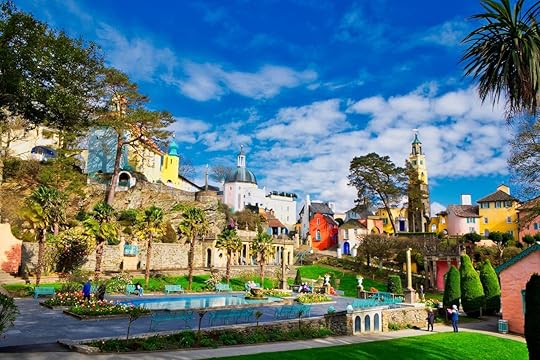
Taking full advantage of its island status, the UK is peppered with pretty coastal towns. Seaside resorts like Blackpool have always been popular with holidaying Brits, but there are plenty of lesser-known towns and villages on the coast to explore. All four nations have something to offer, such as an Italianate village in Wales, a fishing harbor in Scotland, blue flag beaches in Northern Ireland, and smugglers’ coves in England — not to mention the islands. Here are some of the most underrated coastal towns in the UK.
1. Polperro, England
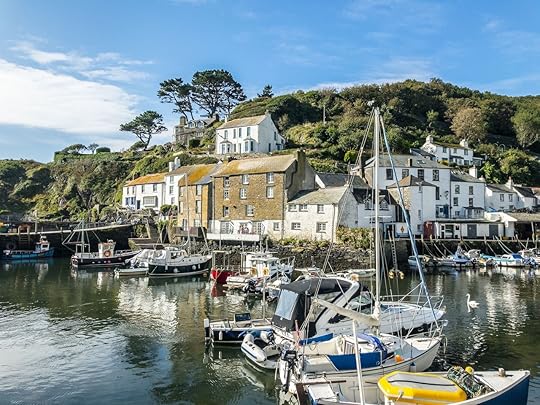
Photo: JPDworld/Shutterstock
Whitewashed cottages form a horseshoe around a bay of iridescent blue water in this fishing harbor in Cornwall. Much of the Cornwall coastline fills up in summer with beachgoers and those looking to impress on a surfboard, but Polperro is managing to curb the negative impact of overtourism by banning cars from the narrow old town streets and encouraging community spirit. You can time your visit for June when the community-run Polperro Festival takes place, a week of art events, live music, a solstice bonfire, and plenty of eccentric traditions.
Polperro is also known for its colorful history of smuggling, which reached its zenith in the 18th century. A visit to the Heritage Museum of Fishing and Smuggling will have you doubting the innocence of those pretty white houses and fishermen’s boats. Visitors can also embark on a coastal walk along the South West Coast Path, leading to large beaches like Lantivet Bay and Lantic Bay. To really immerse yourself in some of Polperro’s charm, stay in The Cottage Bed and Breakfast, a 400-year-old gem run by the Fosters for the last 20 years.
2. Lindisfarne, England
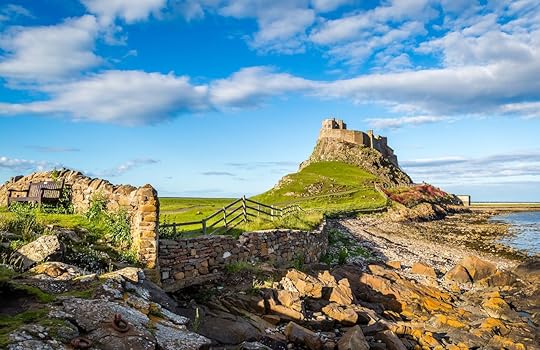
Photo: Michael Conrad/Shutterstock
Lindisfarne, or Holy Island, is a tidal island off the northeast coast of England, which can be accessed by car across the tidal causeway when the tide level permits. It’s famous for having deep roots in Christianity, with St. Aidan arriving on the island in 635 and St. Cuthbert a little later. Remains of an ancient priory are still visible. The crowning (literally) feature of the island, however, is Lindisfarne Castle, an architectural blend of a Tudor fort and Edwardian mansion.
The small village, home to nearly all of the 160 residents that live on the island, is still equipped with a post office as well as the Lindisfarne Centre. At St. Aidan’s Winery you can try the famed local product, Lindisfarne mead. This is a fortified wine made with water, grapes, honey, and herbs, and is claimed to be an aphrodisiac. Lindisfarne is also, surprisingly, home to an artisan coffee roastery, Pilgrims Coffee. There are several places to stay on the island (particularly useful if you don’t pay attention to the tide times) such as the elegant red-brick Lindisfarne Hotel or the traditional Ship Inn.
3. Crail, Scotland
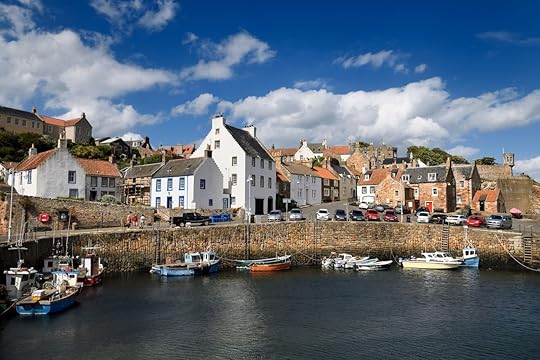
Photo: Reimar/Shutterstock
The village of Crail lies on the coast in the East Neuk area of Fife. Around the diminutive harbor are reddish stones and whitewashed fishermen’s cottages separated by narrow wynds. The Crail Museum and Heritage Centre is a good place to start to get an insight into its history as a royal burgh, the preaching of John Knox in Crail Kirk, and its seafaring tradition. Around the old center, you can see plenty of Scottish architecture and the Tolbooth, with a tower that’s appropriately topped with a smoked haddock-shaped weathervane rather than the traditional cockerel.
At various points throughout the year, you can taste seasonal seafood, particularly at the Lobster Hut where crab and lobster is cooked while you wait, but June sees the Crail Food Festival take over the small village. The festival is a celebration of local Fife produce, including plenty of seafood, breweries, ice cream producers, and even a chili farm. If you want a souvenir of a less perishable nature, visit Crail Pottery for a brightly painted plate to remind you of a (hopefully) sunny stay. If you are partial to a bit of home baking for breakfast, the Honeypot Guesthouse makes for a good place to stay the night.
4. Portmeirion, Wales

Photo: Gokcin Onur/Shutterstock
Portmeirion is one of Britain’s architectural quirks, a little hint of Mediterranean warmth on the north coast of Wales. Welsh architect Sir Clough Williams-Ellis designed the Italian-inspired village between 1925 and 1975, replete with a domed church, columned porticos on building fronts, and colorful walls. His playful, bricolage-style architectural creation is often seen as rejecting modernist ideals of rationality and severity that were rife at the time. Williams-Ellis sought to create a settlement that was in harmony with the natural landscape.
Now owned by a charitable trust, the village remains lively, if rather up-market. Visitors are encouraged to stay in the Grade II listed Hotel Portmeirion, which also boasts an award-winning Art Deco restaurant, though there are also self-catering cottages, most of which are on the scale of spacious townhouses. To complete your Italianate riviera experience, order a gelato from Caffi’r Angel.
5. Shanklin, Isle of Wight
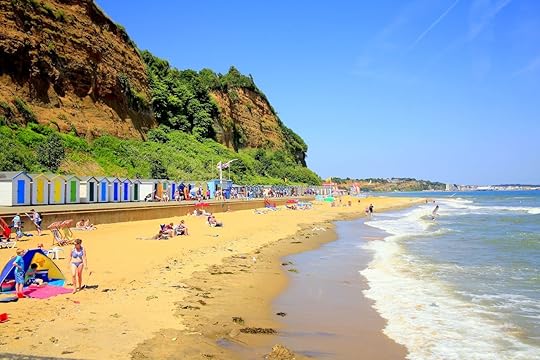
Photo: Oscar Johns/Shutterstock
Not to be confused with nightlife capital the White Isle, this little town on the Isle of Wight is a cosy jumble of thatched cottages and chintz-loving tea rooms. One of the most popular attractions here is the Shanklin Chine, a spectacular wooded gorge with a natural beauty that was celebrated in a poem by John Keats.
The local specialty is the cream tea, easy to find in one of the many tea rooms, which traditionally involves a pot of tea and a mountain of scones with cream and jam. Modern takes have added savory nibbles and even Champagne. You can have tea in the Rylstone Gardens tea rooms, and then visit the Rylstone Bandstand for an outdoor concert on a summer evening. Romantics can stay in the Old Village at the Holliers Hotel, while those wanting some restorative sea air could try the Brunswick Hotel on the shore.
6. Rothesay, Isle of Bute

Photo: SallyAkins/Shutterstock
Off the west coast of Scotland, the Isle of Bute was once the regular haunt of Glaswegian holidayers and Rothesay the quintessential Scottish seaside town. Victorianisms are everywhere, from the stone villas overlooking the bay to the gents’ outfitters Fraser Gillies, which can supply you with a top hat and tails should the occasion arise. Another kind of top hat is famous in Rothesay, though a rather more prosaic version, which is an ice cream cone adorned with a marshmallow snowball from Zavaroni’s.
The Isle of Bute Discovery Centre is both an architectural extravaganza of Art Deco cast iron and glass, as well as being highly informative about the island. The Isle of Bute is also home to the ruins of Rothesay Castle, which dates back to the 13th century and fulfills all castle requirements of moat, drawbridge, and towering defense walls; and Mount Stuart House built in the Gothic Revival style and renowned for its colonnaded Marble Hall and the Marble Chapel.
Bracing Scottish sea air is never enjoyed more than when camping, so consider staying the night at the Roseland Caravan Park which affords magnificent views. If that seems a little risky with the notorious Scottish weather, you could stay a couple of miles away at the Kames Castle Estate where there is an 18th-century walled garden, tennis courts, and a river.
7. Portrush, Northern Ireland

Photo: Spumador/Shutterstock
Lying on a peninsula jutting out into the Atlantic Ocean, Portrush is perfectly located for sea-life spotting and boat tours, and is blessed with two long stretches of golden beaches. You can visit the Coastal Zone, a marine center with tanks and rock pools with local sea life, and a viewing platform from where you can spot dolphins, seals, and porpoises.
The nature side is offset by the ever-popular Barry’s funfair featuring classic bumper cars, roller coasters, and lots of neon lighting. Nearby is the Bushmills Distillery, the oldest whiskey distillery in Ireland. To the east, you can visit the ruins of 13th-century Dunluce Castle, which featured in Game of Thrones. Golf lovers will also find a little slice of paradise at the Royal Portrush Golf Club and the challenging Dunluce Links that recently hosted the 148th Open Championship. Stay in a typical restored Victorian townhouse at Portrush Townhouse Boutique Hostel, within walking distance of the blue flag beaches.
8. Hastings, England
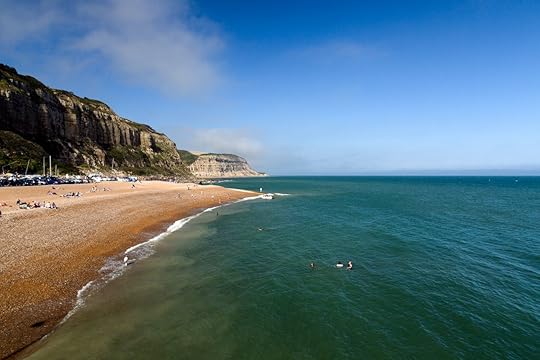
Photo: Philip Mowbray/Shutterstock
Those looking to visit an archetypal British seaside town should look to Hastings, home to posturing Edwardian hotels along the shore front, a Victorian pier, and colorful beach huts. But long before Victorian ladies came to “take the air,” the town was the site of the infamous 1066 Battle of Hastings and is still home to the ruins of the first castle built in England by William the Conqueror.
Though antiquated in its architecture, Hastings is still making a name on the modern culture scene with its arthouse cinema Kino-Teatr (with a Victorian ticket booth) and the contemporary art museum. As the sun sets, follow the scent of frying fish to Blue Dolphin Fish Bar, get takeaway, and sit on the pebble beach. Return to the Victorian era for your night’s accommodation, however, and stay in the old town at the characterful Old Rectory, decorated with eccentric elegance. 

More like this: The most underrated coastal towns in Europe to go to before they become touristy
The post The most underrated coastal towns in the UK to go to before they become touristy appeared first on Matador Network.

Brazilian planes dumping water

By now, word of the fires that have been ravaging the Amazon rainforest for weeks has spread like, well, wildfire. Though the news was slow to break, much of the ensuing public outcry has targeted Brazilian President Jair Bolsonaro for his dismal environmental policies and hesitation in taking action.
Following pleas from local governments and condemnation by world leaders during a G7 summit held this past weekend, Brazil’s far-right president has now authorized military operations to combat the blazes in seven different Amazonian states. Warplanes are currently dumping water on the state of Rondonia in an attempt to quell the fires, and according to a briefing by the defense ministry on Saturday, the nation has readied 44,000 troops in the northern Amazon, though the details of what they plan to do, and when, remain unclear.
A record-breaking 80,000 or so fires have broken out in Brazil this year, more than half of which are said to be have been in the Amazon, according to the National Institute for Space Research. Though Bolsonaro has approved military intervention for those currently raging, the G7 leaders have also pledged roughly $20 million toward fighting the fires as they devastate the largest rainforest on Earth and what some say is its greatest hope for combating climate change. 

More like this: Brazilian president falsely claims Amazon fires were started by environmental groups to make him look bad
The post Brazilian warplanes are dumping water on the Amazon as wildfires rage appeared first on Matador Network.

UK airports to get 3D scanners

The days of removing electronics from carry-ons at airport security could be over as soon as 2022, at least at airports in the United Kingdom. This past weekend, UK Prime Minister Boris Johnson announced an order that would require all airports in the country to install and use 3D scanning technology by 2022, with the goal to both increase security and make passengers’ lives easier.
“By making journeys through UK airports easier than ever, this new equipment will help boost the vital role our airports play in securing the UK’s position as a global hub for trade, tourism, and investment,” The Guardian quoted Johnson as saying. The report noted that the UK’s Heathrow Airport plans to spend 50 million British pounds, about $61 million, on a modern technology called computed tomography 3D scanners that will give security workers a better view of what is inside a passenger’s bag as it passes through the checkpoint. Both Hartsfield-Jackson International Airport in Atlanta and Schipol Airport in Amsterdam already use the scanners.
In addition to keeping their laptops inside their carry-ons, passengers will no longer have to transfer liquids into clear ziplock bags and should enjoy faster security lines at airports where the technology is implemented. No word on when travelers will be able to keep their shoes, belts, and coats on just yet. 

More like this: Domestic and international budget airlines, ranked by baggage fees
The post New airport scanners in the UK will let you keep your liquids and laptop in your luggage appeared first on Matador Network.

Matador Network's Blog
- Matador Network's profile
- 6 followers



